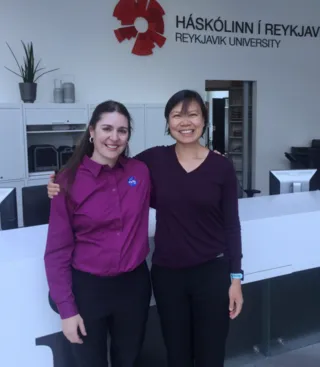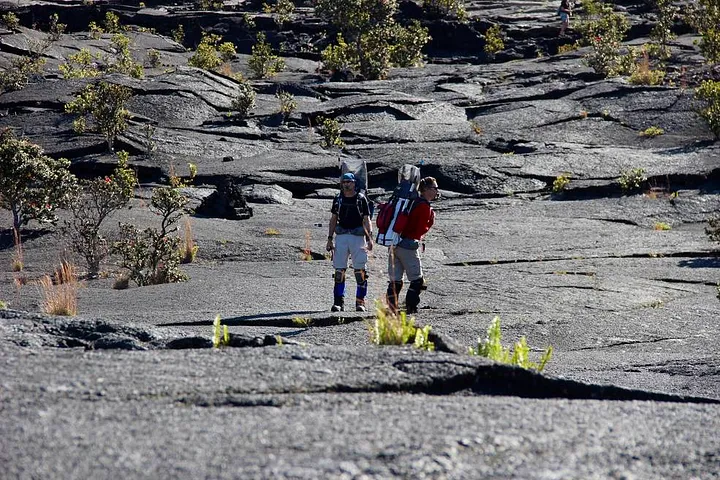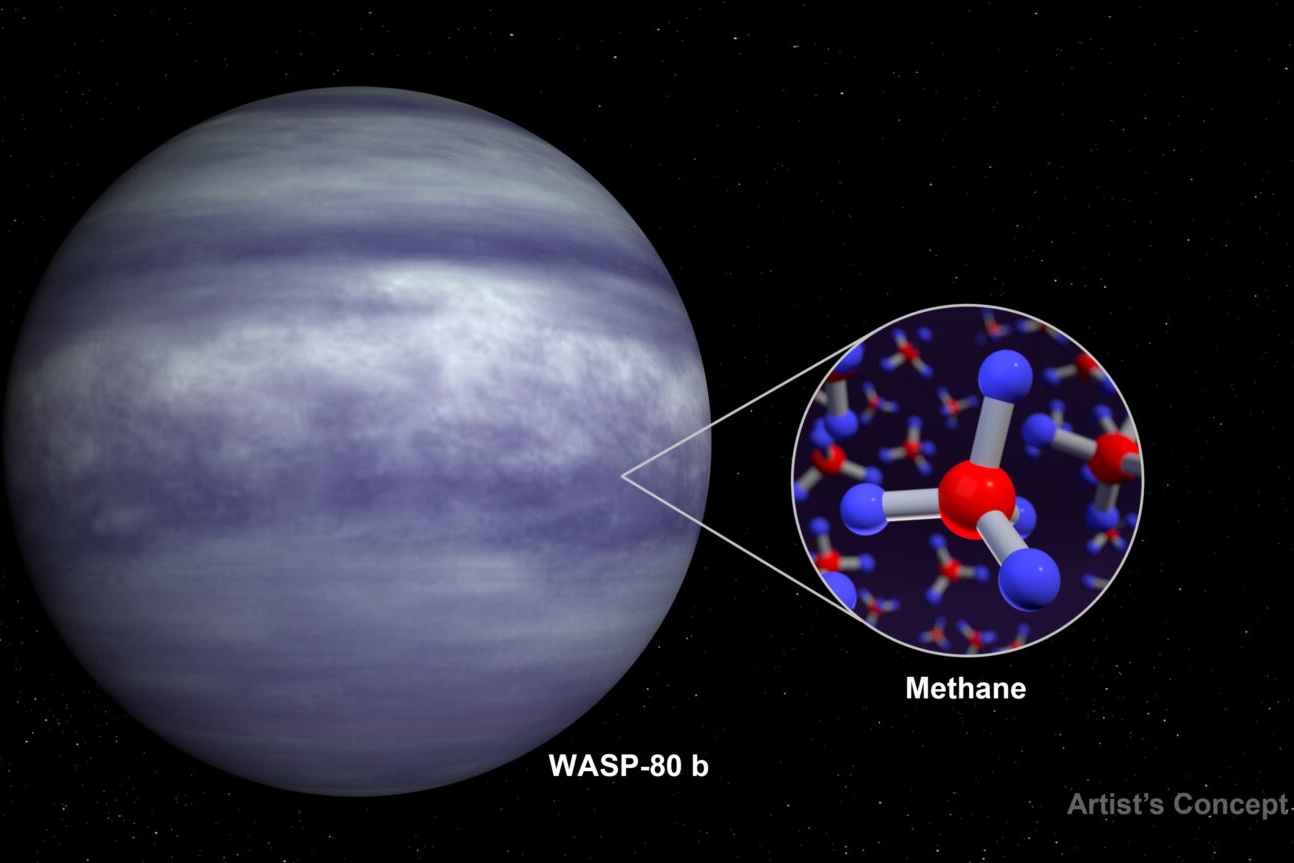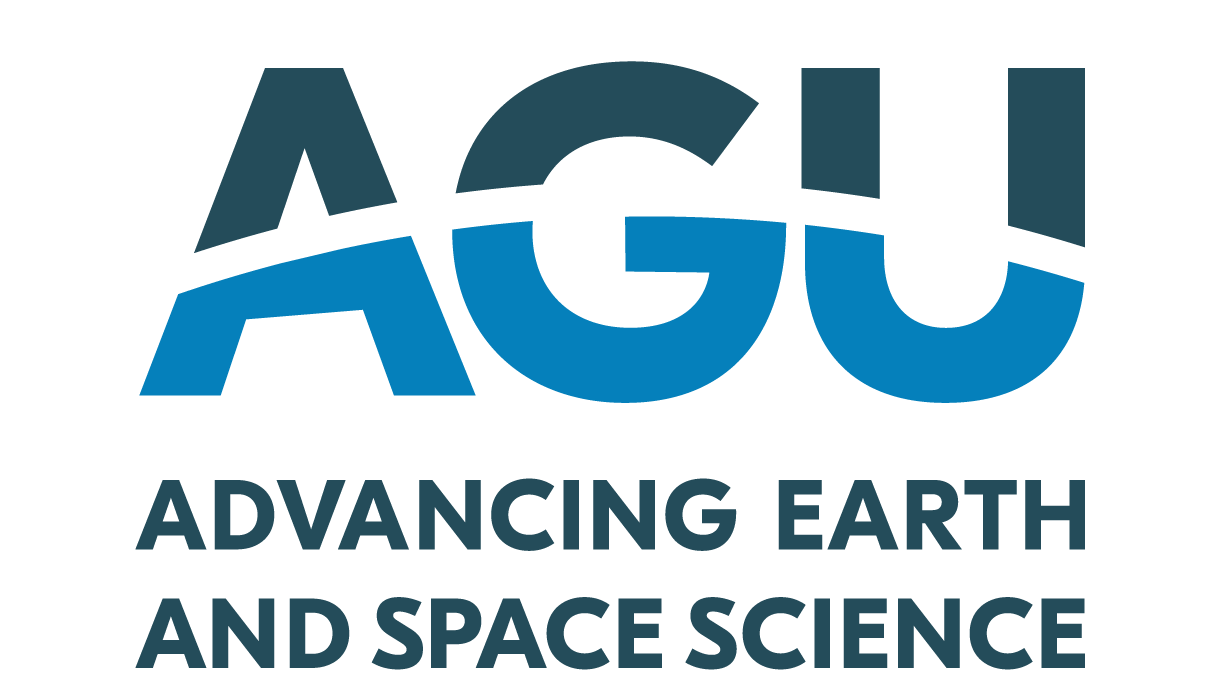BAERI’s Taylor Bell and a team of researchers have identified the presence of methane in the atmosphere…
Alex Sehlke on the next generation of space exploration, collecting water on the Moon, and making lava at NASA Ames
Dr. Alex Sehlke is a geologist working for BAERI at NASA Ames Research Center. He brings his background of volcanology and field work to current projects focused on planetary science and exploration, including his role as a Deputy PI on NASA’s analog research project RESOURCE (Resources for Exploration & Science of OUR Cosmic Environment). This interview has been edited for length and clarity.
BAERI: How would you like to introduce yourself?
Alex: I’m Alex Sehlke. I’m a field geologist, so I go out in the field, collect rocks, look at the rocks there, and also take them to the lab at Ames to study what they’re made of. I study rocks from the Moon, and meteorites, and actually also make my own lava in the lab. So that’s kind of fun.

Alex Sehlke
BAERI: You make your own lava?
Alex: Yes, I make my own lava. I have what’s called a rheometer. We have rocks that we can melt in it, and stir it basically, to measure how viscous or fluid they are. And that has implications for how lavas flow on the surface, how they come through the cracks in the ground and how they erupt and so on. So we can study that in the lab.
BAERI: That’s so cool. And how would you like to introduce the RESOURCE project?
Alex: RESOURCE, which stands for ‘Resources for Exploration & Science of OUR Cosmic Environment,’ is taking advancements that have been made in lunar exploration, and going one step further — we’re looking at how we can enable science and exploration in a sustained way on the lunar surface, and developing all kinds of tools and data products we need to enable that kind of future lunar exploration.
BAERI: And what are some of the biggest barriers for that kind of exploration?
Alex: Well, it’s the Moon, it’s not Earth, and there are a lot of complications when things are far away and we don’t have unlimited resources like we do when doing field work on Earth. Resources in general are limited, whether that’s energy, or the tools you can bring up to the Moon, or the amount of time the astronauts have to do their exploration missions. That is really the bottleneck of things. Plus, the Moon is still a very unexplored body in our solar system. Even though we can look at it during the day or night and we were there 50 years ago, there are still so many unknown things.
BAERI: Looking at the project page, I think I counted 40 people on the team. How do you tackle a project with this many moving pieces?
Alex: Yeah, you need to have management experience. So far, I have managed smaller projects, but I learned a lot from my mentors at Ames, I haven’t done it myself, but I’ve seen my mentors at Ames, Jen Heldmann and Darlene Lim, who do this so well with years and years of experience. And the kind of energy you need to pull this together, and the patience that you have to have to manage so many people…

Jen Heldmann (left) and Darlene Lim (right); Image: NASA
Jen Heldmann, who is the PI, is one of those people who can pull all these brains together to come up with what we need — to work together, be collaborative, and tackle all the science and engineering questions we have to look at before we can actually go back to the Moon and stay there, and do it in a more modernized way compared to Apollo.
BAERI: How would you describe that more modernized way?
Alex: We have technologies now that didn’t exist 50 years ago when we were first going to the Moon. We have all kinds of new technical capabilities now that we can incorporate into space exploration, so we are looking at technologies that might be helpful, and testing them. To do that, we have experts from all kinds of fields. There’s a lot of multidisciplinary research being done within RESOURCE. It’s computer science. It’s geology. It’s engineering. Engineering is a big part of it — engineers are talking and working with the scientists, for example, to develop technologies for extraction of volatiles on the Moon that will be needed for operations on the lunar surface.
BAERI: To my understanding, and please correct me if I’m wrong, the project is looking for resources like ice and other minerals on the Moon, trying to figure out how to get them with the help of robots, and figuring out how to get the robots and humans to talk to each other.
Alex: Yes, exactly. It’s all these intertwined things. First, what are the data layers that we need to make a prediction of where to go to find the resources we need to be sustainable on the Moon? Because we don’t want to get a constant stream of things from Earth. It’s very expensive and you can’t have big payloads on rockets sending things to the Moon all the time. So we have to find it there. And then, what is the technology that you need both on the surface of the Moon and on Earth in order to extract it? And you need all these techniques to do it, especially when things are buried underground. You can’t just like, walk around on the surface of the Moon and collect things. You probably have to go and dig.
BAERI: And what are the resources that you’re looking for?

The rim crest and upper part of the rim of the Moon’s Shackleton crater, where the shadowed interior never receives direct sunlight; Image: NASA/GSFC/Arizona State University
Alex: It’s water, mostly, though the concentrations are low. There’s water on the Moon, but not a lot. I’ve seen the comparison of: If you think about the Sahara being dry, the Moon is about two orders of magnitude drier than that. So it’s a hundred times drier than the Sahara Desert, and you have to make sure you can collect it. It’s water in the form of ice where it’s always cold, like in permanently shadowed regions within craters on the lunar poles — because of the angle the sun hits, and because of the slopes of the crater walls, there are parts that are always in shadow. So it’s probably always cold in these regions, which means ice or hydrogen could be stable and accumulate over billions of years. In short, oxygen and hydrogen are the elements that we’re most interested in.
BAERI: The basics of keeping people alive.
Alex: Yes. Yes. Everything around life on Earth is based around water, and that will be true for being alive on the Moon as well. It’s not just water to drink. You can make fuels out of water. If you take the hydrogen and the oxygen away from each other, you can burn the hydrogen with the oxygen to launch something off of the surface of the Moon, or into deep space for that matter. So that’s why as well.
BAERI: That sounds useful!
Alex: Yeah, it’s very useful, especially if you want to make sure you can go back to Earth.
BAERI: Are there really enough resources on the Moon to sustain people there for a long stretch of time?
Alex: There is more than we ever thought there is. Our team has actually made the calculations that, with several harvest vehicles going over the surface of the Moon, the amount of water that can be extracted from the regolith is quite impressive. I forget the exact number, but it is enough to be sustainable on the scale that we would need for a lunar base. It’s not like we would be able to sustain a city or anything like that. But a team comparable to the size of the previous Apollo missions? That is sustainable with what we can find on the Moon, within the perimeters of where the vehicles that will collect resources could reach within hours or so.
BAERI: Can you talk a little bit about the public engagement piece of the project?
Alex: Sure. So public engagement is always very important. It’s very inspiring to see what NASA can do, and we always strive to inspire the next generation of scientists and engineers. With this project we are working closely with Howard University in Washington, DC, to help people who are underrepresented in STEM disciplines to become more involved. In the past, we have also invited teachers to come with us on field campaigns and see what we do. They then bring that into their classroom.
BAERI: What does a field campaign for this kind of project look like?

Astronaut Stan Love and researcher Alex Sehlke at the Kilauea Iki crater on Hawaii Island during the BASALT project, a NASA Mars-analog mission; Image: NASA
Alex: We want to get close to what the architecture will be for using these technologies on the Moon, so we work to set up a similar network of things at the field sites. We will have limited people, for example, who will actually operate the technology because there aren’t one hundred astronauts on the surface of the Moon, there are maybe three at a time or so. Also, with lunar exploration, there are scientists on Earth who are talking in real time with the astronauts, so we will set that structure up too. It means more brainpower to make informed decisions about, like, is this the right spot to drill, or do we need to go somewhere else?
BAERI: How do you build and test technology for missions that are still years away when technology is changing so quickly?
Alex: Yeah, that’s just part of developing technology. You feel like you start in the future and then five years later you’re like, oh, these are already things from yesterday. That always happens to technology, it evolves so quickly. But within the teams that we have, we are always looking out for things that become available as we go that we could make use of. We try to stay as updated as we can, but we also don’t want to bring in anything new that hasn’t been really tested or that could be a possible danger to the success of whatever we’re building. With previous analog research projects, we have had instances where a new tool became available. For example, we acquired handheld instruments that shoot a laser at a rock and it tells you what it’s made of. Like, that piece of equipment wasn’t initially part of the project when it was designed, but then it became available to us and we wondered, can we actually use these? Let’s get one and see how they work out in an environment of planetary exploration. So I anticipate that within RESOURCE we will come across new technologies as well, where we’ll make the decision of: This sounds really good, we should give it a try.
BAERI: What are some of the questions that people are working on right now?
Alex: We’re still in the early stages of the research program where we develop novel technologies. A drill, for example. How do you build a drill to drill about a meter into the lunar surface? It’s not as trivial as it may sound because, unlike on Earth where if the drill gets jammed in the ground you can just pull it out, on the Moon you can’t do that so easily, or maybe not at all. So we’ve got to figure out how it needs to be designed and get the first prototypes put together to achieve any kind of pre-assessment of, okay, this is actually working, this is going well, and it’s serving the purpose it was designed for. So that’s where we are in hardware development.
We’re also doing software development, especially tools for mission operation. We’re developing virtual reality platforms for data display and collaboration, or collaborative analysis and rapid decision making. These tools are being developed now so that when we get to the later stages of the project, we can use the tools and test them and still have enough time to revise them or make adjustments based on whatever we find is or isn’t working. So those are the big things that we’re currently working on.
And if I haven’t said this before, RESOURCE is not so much focusing on what’s happening in 2024, with Artemis, when astronauts are setting foot on the Moon again. And you have probably heard about the VIPER mission at Ames, which has a defined objective. We’re doing the next generation of things. For example, if VIPER finds resources on the Moon, we’re developing the tools to actually get these resources out. So it’s the step ahead of what’s currently planned to go to the Moon.

Engineers at NASA Ames Research Center test robotics software on an engineering prototype of NASA’s Volatiles Investigating Polar Exploration Rover (VIPER); Image: NASA/Dominic Hart
BAERI: What haven’t I asked you about yet that you’d like to mention?
Alex: One point is that going to the Moon is not just going to the Moon, it’s also going into deep space. You may have seen the Moon to Mars campaign from NASA, which is using the Moon as a stepping stone to develop all the technologies we would need to go even further. For example, Mars. What worked on the Moon will probably work on Mars, too. We have the opportunity to test these things on the Moon and say: Okay, this actually really worked — now we can be more confident that this type of technology works in these types of extreme environments, enabling us to venture out far into space with reliable technology.
BAERI: And the Moon is a whole lot closer in case things don’t go well.
Alex: Yes, exactly, however it’s still a long journey. It’s maybe three days instead of six months, or in extreme cases over a year or so. If you want to leave and come back to Earth, it’s easier to do it from the Moon than from Mars or somewhere else.
BAERI: You can come back.
Alex: Yes. And that’s the goal. We always want to come back, and safety is the highest priority. You want to make sure it’s safe, that’s why we’re doing all this work with these projects, making sure it’s the best technology we can use. We want to have the confidence that it will work, that it will be helpful, and it will achieve success for the mission.


